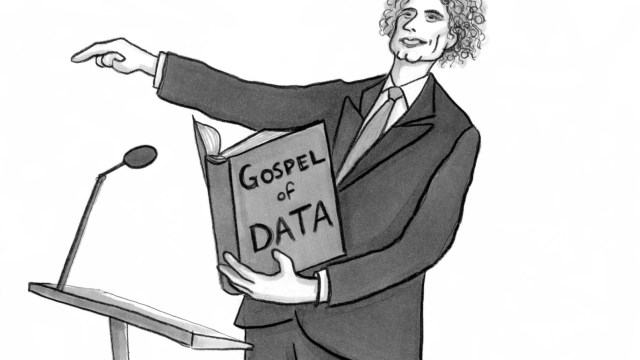Ask Ethan: Why Haven’t We Bumped Into Another Universe Yet?
If the multiverse is real, why hasn’t our Universe, in a sea of infinite possibilities, run into another one at least once?
The Universe we inhabit is vast, full of matter and energy, and expanding at a tremendous clip. Looking billions of light years away, we can see billions of years into our ancient past, finding evidence of newly-forming planets, stars, and galaxies. We’ve seen so far back that we’ve identified clouds of gas that have never yet formed a single star, and found galaxies from when the Universe was only 3% of its current age. Most spectacularly, we can actually see the leftover glow from the Big Bang, from a time when the Universe was a mere 380,000 years old. Yet in all of this cosmic enormity, we’ve never found evidence that our Universe has bumped into another one in this vast Multiverse. Why not? That’s what Rod Russo wants to know:
If the Multiverse Theory is true, shouldn’t our expanding universe have bumped into another universe by now? After all, our universe is now so large that some describe it as “infinite” in size.
This is not only what logic dictates, it’s what no less an authority than Roger Penrose has claimed. But Penrose — and conventional wisdom — are both wrong here. Our Universe is, and should be, isolated and alone in the Multiverse.
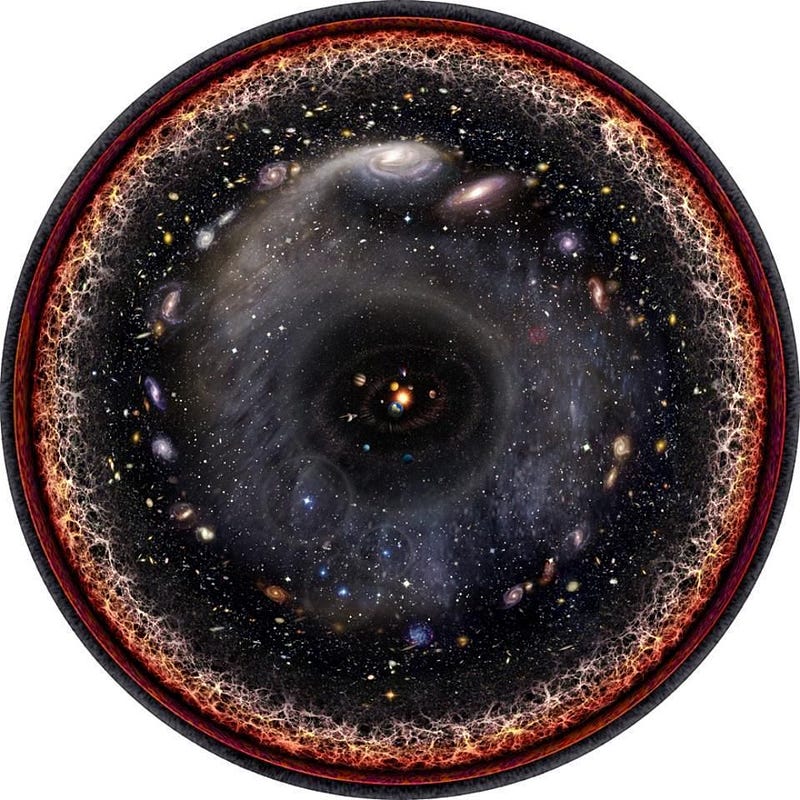
Although there’s a lot of hype and controversy surrounding it, there’s an extremely strong physical motivation for the existence of the Multiverse. If you combine two of our leading ideas about how the Universe works, cosmic inflation and quantum physics, it’s all but inescapable that we’ll conclude that our Universe resides in a Multiverse. Coming along for the ride is another conclusion: that every single Universe that gets created — that every hot Big Bang that ensues — is immediately and forever causally disconnected from all the others, eternally into the future. Here’s how that happens, and here’s how we know.
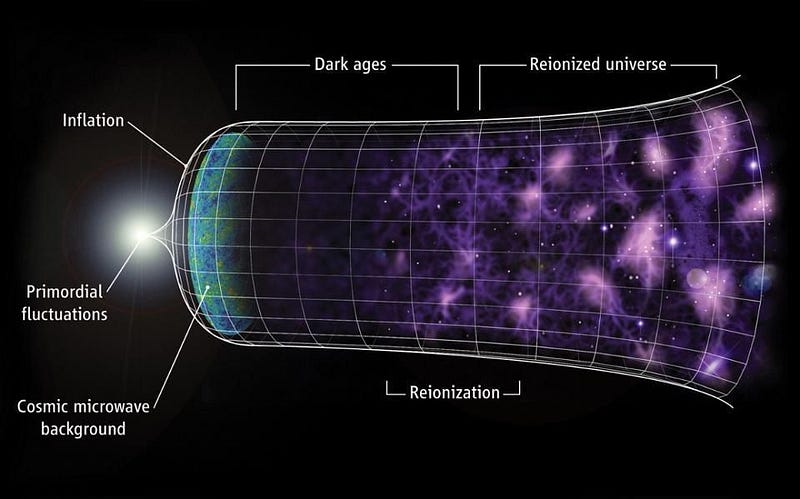
Cosmic inflation came about as an add-on to the Big Bang, successfully providing a mechanism for explaining why it began with certain conditions. In particular, inflation provided answer to the questions of:
- why the Universe was the same temperature everywhere,
- why it was so spatially flat,
- and why there were no leftover high-energy relics like magnetic monopoles,
while simultaneously making new predictions that could be tested. These predictions included a specific spectrum for the density fluctuations the Universe was born with, a maximum temperature that the Universe achieved in the early stages of the hot Big Bang, the existence of fluctuations on scales larger than the cosmic horizon, and a particular spectrum of gravitational wave fluctuations. All of these, except the very last, have since been observationally confirmed.
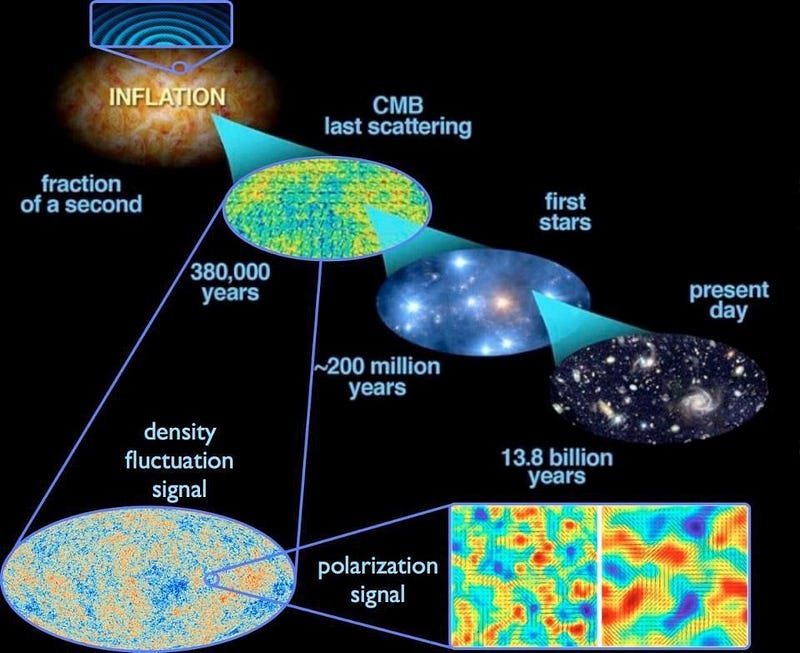
What cosmic inflation is, exactly, is a period prior to the Big Bang where the Universe is dominated by the energy inherent to space itself. Unlike today, where the value of dark energy is extremely small, inflation posits that it was extremely large: larger by far than even the energy density when the Universe was full of matter and radiation in the extremely hot, early stages after the Big Bang. Since the expansion was dominated by the energy inherent to space, the rate of expansion was exponential, meaning that new space was continuously and rapidly created. If the Universe doubled in size after a certain amount of time, then after ten times that amount of time passed, it’d be 2¹⁰, or over 1000, times as large in all dimensions. In extremely short order, any non-flat, matter-containing region of space would become indistinguishable from flat, and would have all the matter particles inflated away so that no two would ever meet.
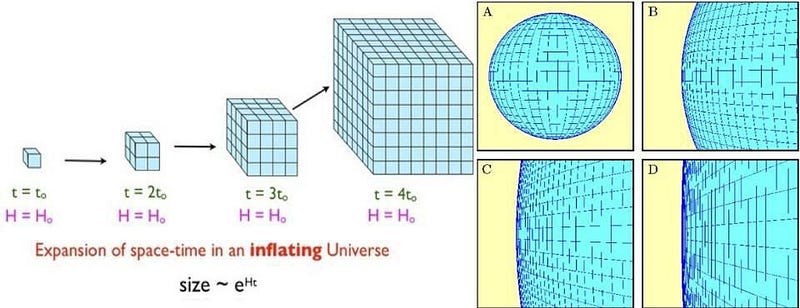
On the other hand, inflation must come to an end at some point. The energy inherent to space cannot remain there forever, otherwise the Big Bang never would have occurred, and the Universe as we know it would never have come to be. Somehow, that energy needs to get transferred from the fabric of space itself and dumped into matter and radiation. A nice way to visualize this is to view inflation as a field that occurs when a ball is at the top of a hill. As long as the ball remains up high, inflation, and this exponential expansion, continues. But in order for inflation to end, whatever quantum field is responsible for it has to roll from the high-energy, unstable state that drives inflation down into a low-energy, equilibrium state. That transition, and “rolling” down into the valley, is what causes inflation to come to an end, and create the hot Big Bang.
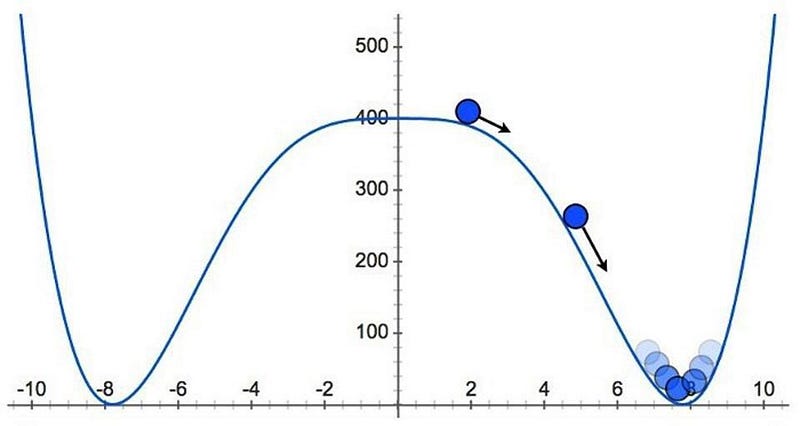
But here’s the kicker: what I just described is how a classical field works, but we just said that inflation has to be, like all physical fields, an inherently quantum one. Like all quantum fields, it’s described by a wavefunction, with the probability of that wave spreading out over time. If the value of the field is rolling slowly-enough down the hill, then the quantum spreading of the wavefunction will be faster than the roll, meaning that it’s possible — even probable — for inflation to wind up farther away from ending and giving rise to a Big Bang as time goes on.
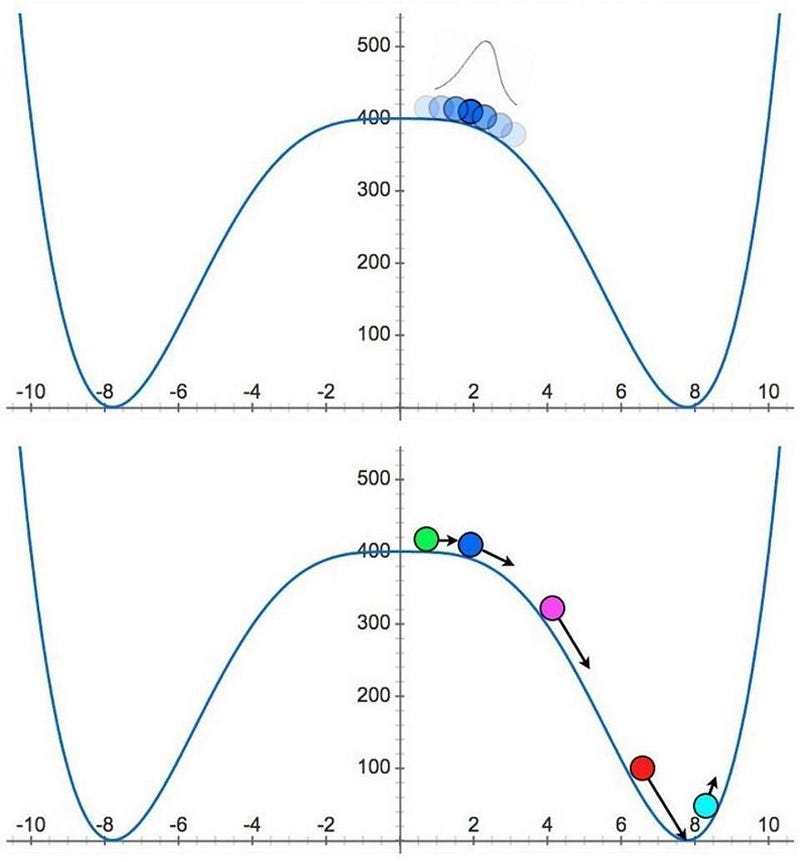
Because space is expanding at an exponential rate during inflation, this means that exponentially more regions of space are being created as time goes on. The thing is, inflation isn’t compelled to end everywhere at once; different regions will see the value of their quantum fields spread out by different amounts and in different directions over time! In a few regions, inflation will come to an end, as long as the field rolls down into the valley. But in others, inflation will continue on, giving rise to more and more space, where it continues to expand exponentially.
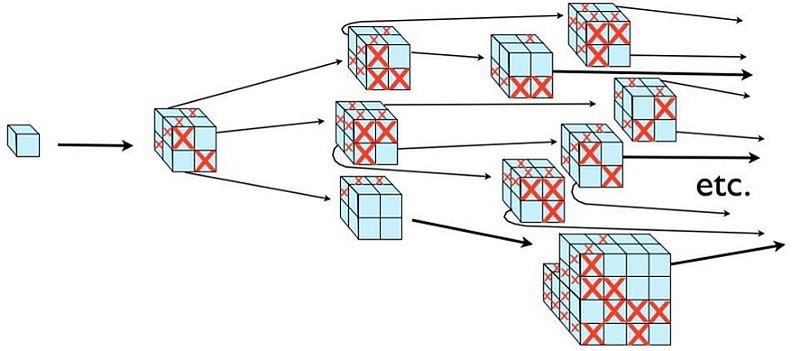
This is where the phenomenon known as eternal inflation, and the idea of a multiverse, comes from. Where inflation ends, we get a hot Big Bang and a Universe — of which we can observe part of the one we’re in — very much like our own. (Denoted by the red “X” above.) But surrounding each of those regions where a hot Big Bang occurs is one where inflation doesn’t end, and the exponential expansion continues. In those regions, more inflating space is produced, driving apart the regions where inflation ended at a faster rate than they’re capable of expanding at. This gives rise to other regions that will have hot Big Bangs, but each and every one of them will be causally disconnected from our own, at the moment of the hot Big Bang and forever into the future.

If you picture the Multiverse as an enormous ocean, you can picture the individual Universes where a hot Big Bang occurs as little bubbles appearing in it. The bubbles, like real air bubbles that rise from the bottom of the ocean, will expand as time goes on, just as our own Universe is expanding. But unlike the liquid water of the ocean, the “ocean” of inflating spacetime keeps on expanding at a faster rate than the bubbles themselves can ever expand. As long as the space between them continues to inflate, and inflation predicts they will for an eternity, no two bubbles should ever collide. Unlike the boiling water on your stove, the bubbles don’t percolate.

It would be an enormous surprise that runs counter to inflation and quantum theory’s predictions if any two Universes ever did collide. While bubble-wall collisions might leave a telltale sign on our Universe, we’ve examined the leftover glow from the Big Bang in gory detail, and no evidence for such a collision exists. Thankfully for our most robust theories of the early Universe, this is exactly in line with what’s been predicted. The reason we don’t see evidence for our Universe colliding with another is because our Universe has never collided with another one, just as our leading theories predict. Anyone who tells you otherwise has got some serious explaining to do.
Send in your Ask Ethan questions to startswithabang at gmail dot com!
Ethan Siegel is the author of Beyond the Galaxy and Treknology. You can pre-order his third book, currently in development: the Encyclopaedia Cosmologica.




